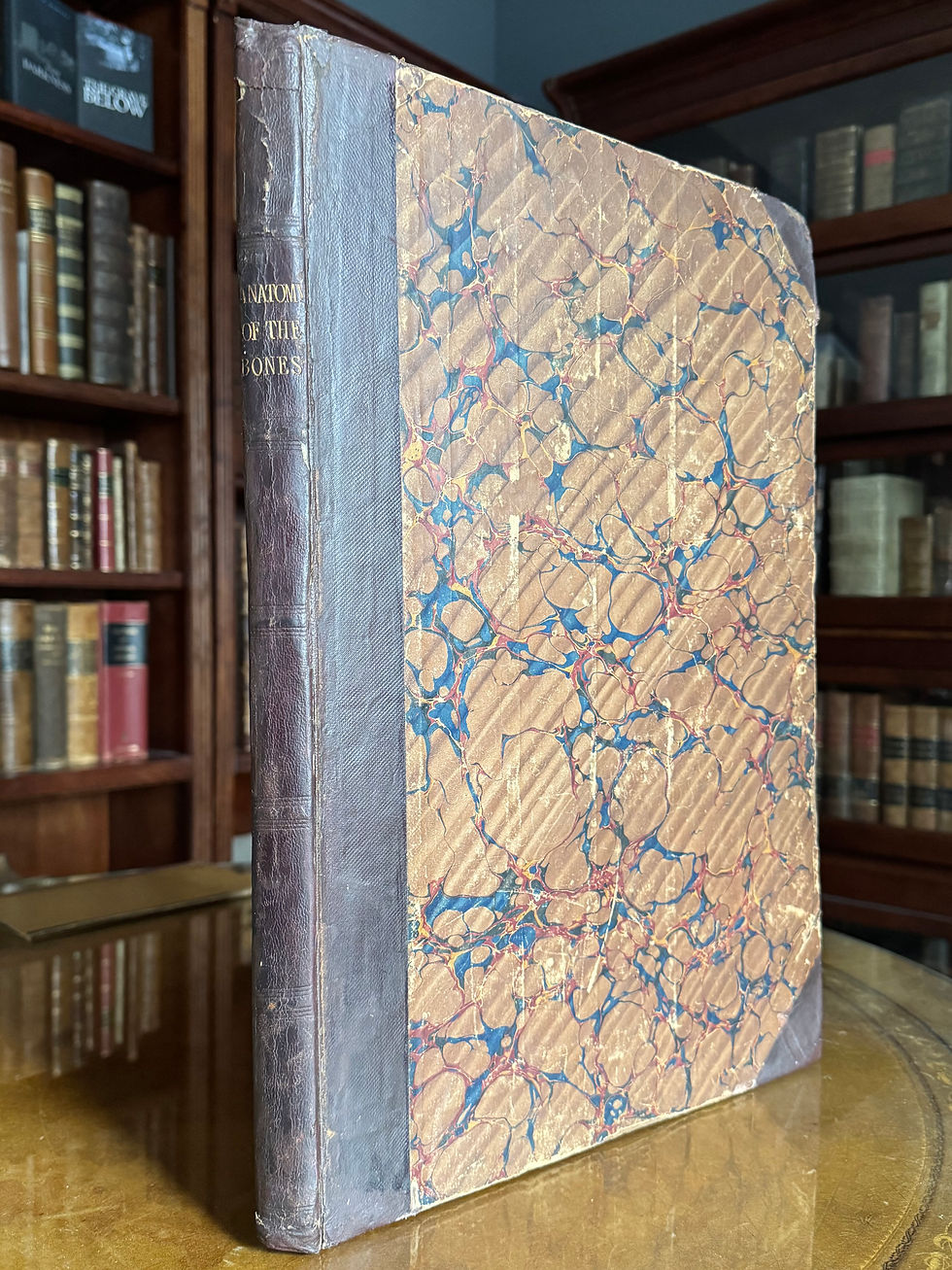King James Pulpit Bible, 1807, 2 volumes
The Holy Bible, Containing the Old and New Testaments: Translated out of the Original Tongues: and with the Former Translations Diligently Compared and Revised, by his Majesty’s Special Command. Appointed to be read in Churches. Oxford: Printed at the Clarendon Press, by Dawson, Bensley, and Cooke, Printers to the University: and sold at the Oxford Bible Warehouse, in Paternoster Row, London. 1807. Cum Privilegio. In two volumes. (Herbert 1497)
In full leather, personalized (John Swainson, Church Warden Parish of Liverpool 1814) bindings with gold text and designs on covers and spine. Raised bands on spines. Gilt page edges. Marbled end papers. Ribbon book mark in each volume.
Front hinge of volume 1 cracked, though board still holding firmly. Superficial leather crack along exterior of volume 2 front hinge. Scattered scuffs and scratches of leather, most particularly affecting the rear board of vol 1. Corners bumped and splitting. A few minor stains along fore edge margin affecting some of the first few leaves of vol 1, not encroaching upon or affecting text. Rare minor foxing. Prior owner’s names and dates listed, in pencil, on second fly leaf of volume 2. Attractively set in large Roman font, in dual columns, with ample margins. Pages bright and fresh. Bindings tight.
Address to the reader at the beginning of vol 1. Separate New Testament title page in vol 2. Apocrypha placed (as anticipated) after the canonical books of the Old Testament, but before the New Testament title page. Volume 2 concludes with several supplements, including index, parallel passages, marginal readings, Scripture weights, measures, and coins.
Each volume measures approximately 14 x 11 ½ inches. Volume 1 being about 3 ½ inches thick, and volume 2 being just under 3 inches thick.
The King James Bible is a triumph in Bible translation, but also a triumph in English literature. James VI/I authorized a new translation of the Bible, rendered afresh from the original languages. Because of this, the resultant Bible was long known as the Authorized Version before the name KJV caught on. However, there is no historical evidence that James ever authorized the resultant translation. He merely authorized the translation process to be undertaken. Nor did the word authorized appear on title pages for centuries. It reads “appointed to be read in churches.” The translators used the 1602 Bishop’s Bible as their referent English translation, but relied heavily on multiple
other earlier English translations as well (including, ironically, the Geneva Bible and the Douay-Rhiemes—the former James was specifically opposed to, and the later was Roman Catholic, not a Church of England translation). Furthermore, the New Testament translation relied on the Desiderius Erasmus’ Novum Testamentum (a 16th century publication of the Greek New Testament based predominately on very late manuscripts of the so-called Byzantine text type, and, also itself another Roman Catholic publication).
Published in 1611, the King James Bible actually used rather outdated English for its day, (thee and thine were already losing ground the you and yours). It also was not an overnight success. Other translations, particularly the Geneva version, remained in publication for decades. However, by the 1640s, the KJV had monopolized the English Bible market and remained essentially unrivaled until the late 19th century. Oxford and Cambridge variants exist (though the differences are very few and very minor). The address to the Christian reader is now, in its own right, a classic in ecclesiology and the history of translation, giving insight into the intentions and process of the translation team.
















